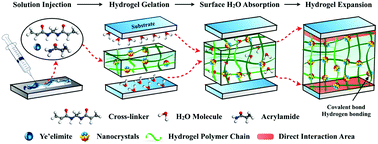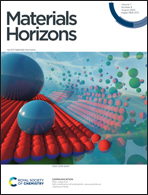Hydrogel networks as underwater contact adhesives for different surfaces†
Abstract
Underwater adhesives with intrinsically tough and stable performance are urgently needed for environmental and engineering applications. Marine organisms have inspired numerous studies on the design and development of wet adhesives. Here we report a facile yet powerful strategy that recapitulates the delivery process of mussel adhesion for the development of strong and durable hydrogel adhesives. With the hydrogel matrix serving as an interfacial binding site, while the nanocrystal fillers contribute to the strong cohesion, they demonstrate outstanding adhesion abilities to a wide range of wet surfaces including aluminum, ceramics, glass, polymers and wood. Moreover, in contrast to commercial products for underwater bonding, the hydrogel adhesives present continuous strength growth instead of degradation with time due to the hydration effects and intrinsic reinforcement capabilities of ye'elimite. By synergistically combining macroscopic scale architectures and molecular level interactions, this in situ formation strategy opens a new route to incorporate nanocrystals into a hydrogel matrix, leading to a universal bonding solution on diverse surfaces underwater.

- This article is part of the themed collections: Polymers in liquid formulations and Materials Horizons Lunar New Year collection 2021


 Please wait while we load your content...
Please wait while we load your content...